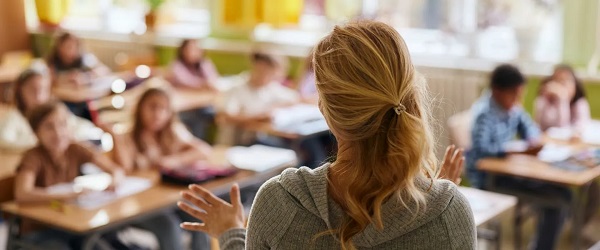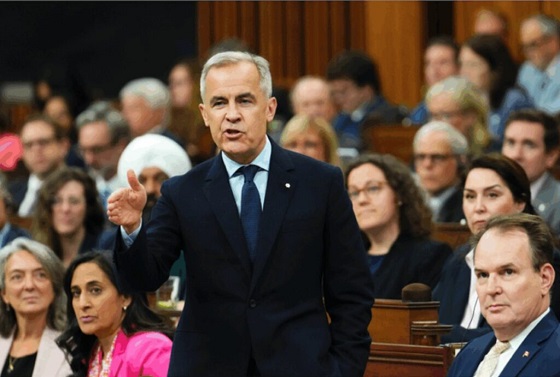National
Canadian twins Chase and Sydney Brown set to make American college football history

They were born together, they grew up together and attend the same American university.
Next week, Canadians Chase and Sydney Brown will make U.S. college football history together.
The Browns, identical twins from London, Ont., will represent Illinois at the Big Ten media days Tuesday and Wednesday at Lucas Oil Stadium in Indianapolis. It’s reportedly the first time in U.S. college football history that twins will participate in a media day event together.
Illinois’ session is scheduled for Wednesday.
“Sydney and I always dreamt about playing college ball together and that’s been the story since the start,” Chase Brown told The Canadian Press in a telephone interview. “A couple of days ago we looked back and reflected on our path to where we are right now.
“We recalled a time when we were at our mom’s place looking out at local high school in London watching homecoming games and thinking we couldn’t wait to play high school football and be like those guys . . . and here we are now. This is a terrific opportunity to represent the great men and players who’ve been part of this program and the university at such a high level . . . it’s one we’re looking forward to and ready for.”
The brothers were significant contributors last season for Illinois (5-7 overall record, 4-5 in the Big Ten) in Bret Bielema’s first season as head coach.
Chase Brown, a five-foot-11, 205-pound running back, was the Big Ten’s third-leading rusher (1,005 yards on 170 carries, 5.9-yard average) with five touchdowns. He added 14 catches for 142 yards (10.1-yard average) and was named to the All Big 10 third team.
Sydney Brown, a six-foot, 200-pound defensive back, is a four-year starter at the school with 262 tackles and four interceptions in 38 career starts. He was an All-Big Ten honorable mention last season after registering 81 tackles (team-high 50 solo).
This week, Chase Brown was added to the watch list for both the Maxwell Award for college player of the year and Doak Walker Award for top running back. He was also on last year’s Walker list.
A second straight 1,000-yard season would enhance Chase Brown’s childhood dream of one day playing in the NFL. And he’s looking forward to being a part of first-year offensive co-ordinator/quarterback coach Barry Lunny Jr.’s gameplan.
“His offence is a lot faster, we’re spread out more and we’re going to get a lot of playmakers the ball as well,” Brown said. “That’s going to be exciting to watch and I’m glad to be a part of it.
“But I’m not going to change the way I play. I’m going to go hard no matter what every single time I get an opportunity on the field . . . if I do that, then everything else will fall into place.”
While an NFL career remains a priority for Brown, he’s keeping the door open on a possible return to Canada.
“My goal since I I was a child was to play pro football,” he said. “I grew up watching Canadian football, I played it in high school and I’m not opposed to that idea at all.
“I’m not in control of where I go. The only thing I control right now is the work I put in and the production I have on the field . . . that’s what I have to focus on.”
The Browns began their high school careers in London before moving to Bradenton, Fla., and helping St. Stephen’s Episcopal School win consecutive Sunshine State Athletic Conference titles. Chase Brown originally enrolled at Western Michigan because of its aviation program before rejoining his brother at Illinois.
There’s precious little physically that distinguishes the two, who both wear their hair in a bun. Sydney Brown is slightly bigger but Chase Brown is the older of the two, by about two minutes. In full gear, the only way to tell them apart on the field is by their numbers — Chase Brown wears No. 2 while Sydney Brown dons No. 30.
If the Browns graduate to the pro ranks. they’ll very likely be on different teams, something Chase Brown said he and his brother fully understand.
“Obviously we don’t choose where we go at the next level,” Brown said. “A lot of it has to do with how we play and what teams are interested.
“But we’ve done so much here together that we’ll be able to reflect upon it together in the future, so we’re good.”
This season, the Browns will again be carrying the torch for young football players north of the border, providing more evidence Canadians can play in the NCAA.
“Canada is often overlooked for football,” Brown said. “I just hope we can motivate more Canadians to make the move and just know it’s not impossible to get down and play at a Power Five school.
“But this doesn’t come without sacrifice, it takes a lot of hard work. As long as you learn to put in the work, it’s not impossible to do.”
Illinois is slated to open its ’22 season hosting Wyoming on Aug. 27. And Brown, for one, isn’t resting upon his laurels.
“We’re really confident in what we have and we’re just looking forward to putting it on the field,” he said. “We just have to dominate every single week, be the best players we can be on the field, the best people we can in the community and leave Champagne, Ill., feeling good and like we left this university in a better place than when we came in.”
This report by The Canadian Press was first published July 20, 2022.
Dan Ralph, The Canadian Press
Indigenous
Residential school burials controversy continues to fuel wave of church arsons, new data suggests

By Edgardo Sepulveda for Inside Policy
Church arsons surged again in 2024 according to new data released by Statistics Canada—continuing a disturbing trend first uncovered by a Macdonald-Laurier Institute investigation published last year.
Scorched Earth: A quantitative analysis of arson at Canadian religious institutions and its threat to reconciliation, which I published last April, warned that the arson wave – almost certainly spurred by ongoing anger over potential unmarked burials of children at residential schools –would not disappear without concerted government policy intervention.
Unfortunately, my prediction is proving accurate.
Newly available custom data from Statistics Canada confirms that arsons in 2024 continued at nearly double the baseline level established from 2011–17.
This persistent elevation is particularly concerning given that arson is a dangerous crime with significant financial costs and, in the case of religious institutions, broader implications for Canadian society and political discourse. Most importantly for those committed to Indigenous reconciliation, the apparent lack of effective policy response risks undermining public support for reconciliation efforts—suggesting these crimes are not being treated with the seriousness they deserve, particularly because many targets are Catholic churches associated with residential school legacies.
Scorched Earth developed specific terms and a conceptual framework to analyze arsons at religious institutions. First, I refer to “potential unmarked burials” rather than other terminology, including “mass graves” – language suggesting verified remains and, potentially, the site of clandestine burials. Neither has been established. No remains have been verified at any of the 21 announced sites. The Tk’emlúps te Secwépemc First Nation revised its own characterization of the Kamloops, BC, announcements in May 2024 to “probable unmarked burial sites,” a significant shift from its initial May 2021 announcement of “remains of 215 children.” This precipitated announcement, together with some of the initial media coverage in Canada and elsewhere, likely contributed to the intensity of the arson response.
Second, the conceptual framework, updated with the latest Statistics Canada data, separates “baseline” from “excess” arson associated with specific shocks, such as the announcements. It shows that arsons at religious institutions have remained elevated since the initial spike in 2021. Based on careful geographic statistical analysis presented in Scorched Earth, I demonstrated that the most likely explanation for elevated arsons was a criminal response prompted by the 17 announcements of potential unmarked burials at former residential schools, beginning in Kamloops, B.C., in May 2021. Four additional announcements occurred in 2024, bringing the total to 21. While data through 2023 showed no detectable increase in arsons related to the Israel-Gaza conflict, analysis of 2024 data suggests this changed: arsons in response to that conflict now constitute a minority of the increase above baseline levels, with the majority remaining those related to announcements of potential unmarked burials.
Investigation and Prosecution Rates Remain Insufficient for Effective Deterrence
Statistics Canada’s newly released custom clearance data for arson at religious institutions provides the first comprehensive official view of law enforcement effectiveness in these cases, superseding the preliminary compilation included in Scorched Earth.
Crimes in Canada are considered “solved” when police identify a suspect with sufficient evidence to support charges. Cases are then classified as “cleared” through two mechanisms: laying charges (“cleared by charge”) or alternative processes such as diversion programs (“cleared otherwise”).
As Figure 2 illustrates, the cleared-by-charge rate for all arson averaged 13.1 per cent over the 2011–24 period. For religious institutions, the yearly average reached 14.4 per cent—marginally higher but still concerning. The clearance rate for religious institutions shows significant year-over-year variability, reflecting the smaller statistical base compared to all arsons. The “cleared otherwise” category adds an average of 4.7 per cent for both arson types.
While these low clearance rates align with those for other property crimes, the continuing elevated arson rate suggests they provide insufficient deterrence for either first-time or serial arsonists. Evidence from Scorched Earth indicates that sustained clearance rates in the mid-30 per cent range—achieved by the National Church Arson Task Force (NCATF) in the United States during the 1990s—effectively reduced church arsons targeting predominantly Black congregations in the American South.
While my statistical analysis indicates that announcements of potential unmarked burials likely motivated many incidents, this remains circumstantial evidence. Direct evidence would require confessions or explicit statements of rationale from arrested arsonists, or credible claims of responsibility from organized groups. Out of the 306 arsons at religious institutions over the 2021-24 period, 53 resulted in charges and 13 were cleared through alternative processes, totaling 64 cleared incidents—an overall clearance rate of 21 per cent.
A clearance rate at this level, while insufficient for effective deterrence, makes it unlikely that most arsons during this period resulted from organized political, ideological, or anti-religious campaigns. A coordinated campaign would likely be visible to investigators even at this clearance level. Since police identify suspects in far more cases than they prosecute, investigators develop a broader perspective on potential culprits than clearance rates alone suggest. Law enforcement officials have not provided any indication of such organized campaigns.
Federal and Provincial Funding Addresses Searches But Ignores Consequences
Neither federal nor provincial governments have introduced policy initiatives addressing elevated arson rates at religious institutions, despite substantial new funding for related matters.
Following the Kamloops announcement, the federal government launched the Residential Schools Missing Children Community Support program, providing $246 million to hundreds of communities, including for research and field investigations. Separately, British Columbia, Alberta, Ontario, and other provinces have committed hundreds of millions in additional dollars, including programs to address mental health effects from the search process and announcements.
This funding inventory highlights a significant policy gap: substantial resources address the cause—announcements of potential unmarked burials—while none target the effect: arsons at religious institutions.
Even viewed narrowly as a crime issue, recent government responses to other property crimes demonstrate available policy tools. When auto theft peaked in 2023, the federal government announced $121 million in federal support, convened a national summit with all levels of government and law enforcement, and released a National Action Plan by May 2024.
Policy Gaps and a Call to Action
The NCATF, created in response to arsons targeting Black churches in the 1990s United States, achieved clearance rates sufficient to reduce incidents. Canada possesses the same policy tools but has not deployed them for residential school-related arsons.
This is not a matter of capacity or institutional precedent. Recent government responses to other serious property crimes, such as auto theft, demonstrate that Canada can mobilize coordinated federal-provincial action when it chooses to. The apparent policy inaction since 2021 for residential school-related arsons must end.
Canada is not powerless to stop the arsonists. The policy recommendations set out in Scorched Earth continue to be valid:
- Create a national or regional integrated police/fire investigations unit focused specifically on arson at religious institutions. This integrated unit would investigate arsons at all religious institutions—Christian, Muslim, Jewish, and others.
- Improve Indigenous police and fire protection services, including to ensure full Indigenous participation in the integrated unit.
- Complete the long-running project of building and maintaining a comprehensive and timely national and on-reserve database of fire statistics.
Law enforcement officials must thoroughly investigate and prosecute the arsonists. The attacks threaten reconciliation and full Indigenous equality—and they must be condemned by all Canadians.
Economist Edgardo Sepulveda has more than 30 years of experience advising clients in more than forty countries. He has written for Jacobin magazine, TVO Today, and the Alberta Federation of Labour, and has been lead author of three peer-reviewed academic articles in the last five years. He received his BA (Hon) from the University of British Columbia and his MA from Queen’s University, both in Economics. He established Sepulveda Consulting Inc. in 2006.
Health
Saskatchewan woman approved for euthanasia urged to seek medical help in Canada rather than US

From LifeSiteNews
Saskatchewan Premier Scott Moe encouraged Jolene Van Alstine, who has a rare disease, to work with his government on a solution.
Saskatchewan Premier Scott Moe is urging a woman with a rare disease, who has been approved to die by euthanasia because she can’t get proper care, to instead work with his government on a solution.
As reported by LifeSiteNews last week, Saskatchewan resident Jolene Van Alstine was approved to die by state-sanctioned euthanasia because she has had to endure long wait times for what she considers to be proper care for a rare parathyroid disease.
Van Alstine’s condition, normocalcemic primary hyperparathyroidism (nPHPT), causes her to experience vomiting, nausea, and bone pain.
As a result of Van Alstine’s frustrations with the healthcare system, she applied for Canada’s Medical Assistance in Dying (MAiD) and was approved for a January 7, 2026, death date.
Her case drew the attention of American media personality Glenn Beck, who has been in contact with Van Alstine to determine whether she can get the surgery done in the United States. Even the administration of U.S. President Donald Trump has been briefed on the matter.
According to Moe, Van Alstine has taken her case to Saskatchewan Health Minister Jeremy Cockrill, asking for help.
“There has been an opportunity to see specialists in Saskatchewan and outside of Saskatchewan, and those conversations about maybe potentially seeing additional specialists continue with the minister’s office and the Ministry of Health,” Moe said yesterday at a press conference.
“I would hope that she’d continue to work with the Ministry of Health, because I think there’s work going on to see even additional specialists at this point,”
A recent Euthanasia Prevention Coalition report revealed that Canada has euthanized 90,000 people since 2016, the year it was legalized.
Even some lobby groups have pushed for MAiD to be expanded to minors.
As reported by LifeSiteNews, over 23,000 Canadians have died while on wait lists for medical care as Prime Minister Mark Carney’s Liberal government focuses on euthanasia expansions.
-

 Great Reset2 days ago
Great Reset2 days agoViral TikTok video shows 7-year-old cuddling great-grandfather before he’s euthanized
-

 Alberta2 days ago
Alberta2 days agoSchools should go back to basics to mitigate effects of AI
-

 Daily Caller2 days ago
Daily Caller2 days agoChinese Billionaire Tried To Build US-Born Baby Empire As Overseas Elites Turn To American Surrogates
-

 Business2 days ago
Business2 days agoMajor tax changes in 2026: Report
-

 International2 days ago
International2 days agoTwo states designate Muslim group as terrorist
-

 Digital ID1 day ago
Digital ID1 day agoCanada releases new digital ID app for personal documents despite privacy concerns
-

 Bruce Dowbiggin1 day ago
Bruce Dowbiggin1 day agoNFL Ice Bowls Turn Down The Thermostat on Climate Change Hysteria
-

 Censorship Industrial Complex2 days ago
Censorship Industrial Complex2 days agoDeath by a thousand clicks – government censorship of Canada’s internet







